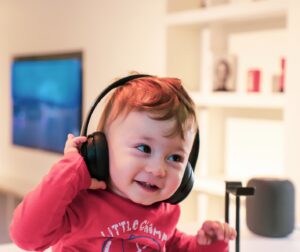Making sense of sensory processing, by Danielle Gluckman Msc. Occupational Therapy, Bellavista School
We all experience the world through our senses namely touch, taste, sight, hearing, smell and movement (vestibular and proprioceptive). These are called the seven senses. This information allows us to make sense of the world around us. Dr Jean Ayres, an Occupational Therapist, developed the theory of sensory integration in the 1960s. She explained that 80% of our nervous system – made up of the brain, spinal cord and nerves – are involved in processing and organising incoming sensory information. For many of us, this process is efficient and effortless, as even though our senses are bombarded with information, not all information is deemed relevant and necessary to process. The inputs that are deemed relevant, are processed and organised by our brain, which results in an output which we see as a behavioural or motor response. This is known as sensory processing.
Lucy Miller, also an occupational therapist, took Dr Ayres’s theory of sensory integration and broke it down into three categories namely sensory modulation, sensory discrimination and sensory based motor disorders. These are further broken down into three distinctive difficulties or disorders which are described as sensory over responsive, sensory under responsive and sensory craver or seeker.
The easiest way to understand this, is to look at what is known as ‘the cup analogy.’ Children with over responsivity have a cup that is small, their neurological threshold for input is reached very quickly with a small amount of sensory input. Children with under responsivity have a cup that is large, their neurological threshold for input takes a long time to get to the just right amount of input. These children do not notice the input i.e. the child that has food all over their face after lunch. These are children that seem to watch the world pass them by i.e. they do not register the input coming in from the environment. Children who are described as the sensory craver or seeker also have a cup that is large, but they actively seek out more input to meet their ‘just right’ level i.e. paste their face, body, hands and even the floor during lunch.
Signs to watch for in children include:
- Struggling with brushing teeth or hair
- Difficulty eating certain foods
- Needing to wash hands after eating, drawing or doing activities in classroom
- Having to have tags removed from clothing
- Resisting being moved into different positions
- An aversion to noise such as hair dryers and vacuum cleaners
- Difficulty moving between activities or places
- Constantly on the move or experiencing difficulty sitting still to complete tasks
- Bumping into others, into objects or just falling over their own feet
If your child has any or a few of these markers, a consultation with an occupational therapist is recommended.
Bellavista School is a Private Remedial School in Johannesburg for more information, visit www.bellavista.org.za
About Bellavista SHARE
Bellavista S.H.A.R.E. is the Education Resource Centre of Bellavista School, an independent school in Johannesburg that is widely regarded as a centre of excellence in the field of remedial education. With the Bellavista S.H.A.R.E initiative, the school harnesses the collective capacity it holds within its own staff to improve the quality of educational delivery in Southern Africa by sharing its wealth of professional knowledge, experience, and collective expertise with the community of educators and health professionals working with children in the region.



